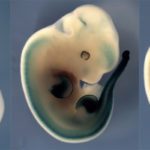Link to Pubmed [PMID] – 23547943
BMC Genomics 2013;14:215
BACKGROUND: Mammalian genes are regulated through the action of multiple regulatory elements, often distributed across large regions. The mechanisms that control the integration of these diverse inputs into specific gene expression patterns are still poorly understood. New approaches enabling the dissection of these mechanisms in vivo are needed.
RESULTS: Here, we describe TRACER (http://tracerdatabase.embl.de), a resource that centralizes information from a large on-going functional exploration of the mouse genome with different transposon-associated regulatory sensors. Hundreds of insertions have been mapped to specific genomic positions, and their corresponding regulatory potential has been documented by analysis of the expression of the reporter sensor gene in mouse embryos. The data can be easily accessed and provides information on the regulatory activities present in a large number of genomic regions, notably in gene-poor intervals that have been associated with human diseases.
CONCLUSIONS: TRACER data enables comparisons with the expression pattern of neighbouring genes, activity of surrounding regulatory elements or with other genomic features, revealing the underlying regulatory architecture of these loci. TRACER mouse lines can also be requested for in vivo transposition and chromosomal engineering, to analyse further regions of interest.

